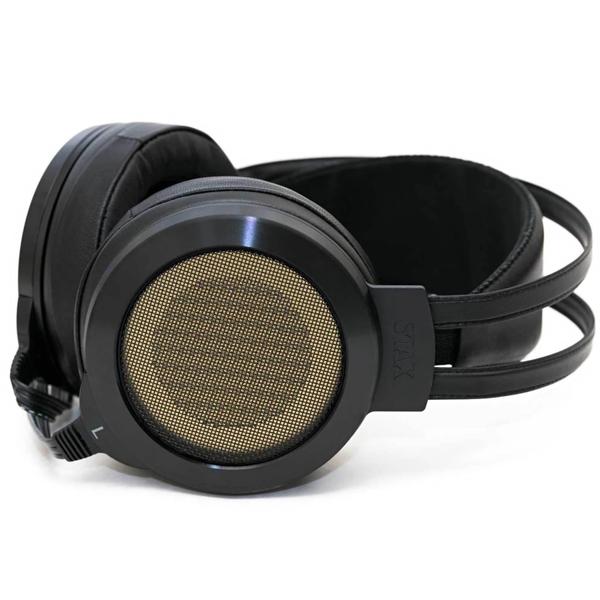6db.
Every three decibels of volume requires the power output to double.
in contrast, a perceived doubling of volume is something like 10db (I forget exactly how much).
6db.
Every three decibels of volume requires the power output to double.
in contrast, a perceived doubling of volume is something like 10db (I forget exactly how much).
Yes
Thanks, that helps
+1
It’s 10
Is there any way to guesstimate something like:
125w amp full power would be equivalent to 250w at 7/10 and 500w at 5/10, or are there too many variables to make a generalization like that.
and I don’t mean 7/10 and 5/10, just using numbers to fill in, if you know, what would they be
there any way to guesstimate something like:
125w amp full power would be equivalent to 250w at 7/10 and 500w at 5/10, or are there too many variables to make a generalization like that.
I wouldn’t be able to guess it.
Here is what I used to use for stereo amps. It is a generalization. It also assumes some things. One is you have to know the sensitivity of your speaker. A speaker that is 85 dB sensitivity (average home speaker) means 1W will give you 85 dB with your head 1 meter in front of it. most guitar and bass speakers have a higher sensitivity than this, and thus will play louder with less watts. (however sensitivity isn’t usually given by bass cab manufacturer like it is in home audio speakers). holding your head 1 meter in front of a speaker is not realistic in the real world, and sound diminishes quickly with distance. so the farther away/bigger the room the more watts you need, which is why the rolling stones require a billion zillion watts in yankee stadium.
anyhoo, here’s the chart. explanations will follow.
Watts to dB
1W = assume 85dB/w/m = 85dB
(so 1W gives you 85dB at 1 meter away from speaker)
2w = +3 dB = 88dB
4w = +6 = 91dB
(notice we have to double the watts each time to get an additional +3dB)
8w = +9 = 94dB
16w = +12 = 97dB (2x loud as 1w)
32w = +15
64w = +18
the sweet spot IMO:
**128w = +21 = 106 dB (2x loud as 16W)
**256w = +24 = 109 dB
**512w = +27 = 112 dB
1024w = +30 = 115 dB (2x loud as 128W)
2048w = +33
4096w = +36
8192w = +39 = 124 dB (2x loud as 1024W)
some sample spl readings at performances:
New age: 60-70 dB
Folk: 75-90 dB
Jazz: 80-95 dB
Pop: 90-95 dB
Classical: 100 dB
Rock: 95-110 dB
Heavy metal: 110 dB
It’s kind of accepted that the smallest increase in dB that can be easily heard is +3 dB (i.e. increasing 5 dB to 8 dB sounds “a little louder”). In order to get this you need to DOUBLE the amp’s watts. A +10 dB increase is perceived as twice as loud. So as you can see as amps get bigger you get insane diminished returns. Which is why I think buying huge amps is a waste of money. Some people will argue that a gigantic amp gives you added “headroom” (peak transients/loud short bursts) but the usefulness of this seems to be controversial amongst engineers (and basses don’t have nearly as much peaks as guitars). To me, for most people the sweet spot zone for amps is marked above, which is why most bass amps are between 100-500w.
tldr: get a 500W amp. do you need a super monster 1000W amp? it’s only a little louder than a 500W amp. also notice you can use this chart in interesting ways. want a practice amp? 15W is almost as loud as 50W and might be a lot cheaper. (all things being equal of course. a low quality speaker may sound like crap for reasons that have nothing to do with it’s power). play jazz? pick a smaller lighter cheaper amp that puts out around 100W.
Crown amplifiers has a great article on this.
@itsratso I read the whole article.
Now I want to play a coffee shop with 10,000 watts and a double stack of 105 db sensitivity speakers. 


Seriously though, that was a great article.
Weird. Some kind of internal load resistor when operating at 4 ohms?
I think it has to do with what resource the amplifier runs out of first. If it drives down to 4 Ohms it has the current capacity. If it can supply the same power at 8 Ohms it has to also have the voltage capacity.
not a lot of manufacturers publish the sensitivity ratings of bass cabinets, but i have a feeling they are much more sensitive than home speakers. i found a 1x12 cabinet that was rated at 97dB ![]() that’s close to twice as loud as a comparable home stereo speaker. high sensitivity home speakers became a big thing when audiophiles would fall in love with low power tube amps, where you could drive 110 dB speakers to insane levels with 8 or 10 watts. also a big thing in japan, where stereo guys sit 2 feet in front of their stereos (nearfield listening) because apartments are so small.
that’s close to twice as loud as a comparable home stereo speaker. high sensitivity home speakers became a big thing when audiophiles would fall in love with low power tube amps, where you could drive 110 dB speakers to insane levels with 8 or 10 watts. also a big thing in japan, where stereo guys sit 2 feet in front of their stereos (nearfield listening) because apartments are so small.
Seriously though, that was a great article.
That’s classic Bradford Benn. I guessed him after the first sentence. He definitely knows what he’s talking about. Samsung bought Harman(Crown) and very siilily let him go. He landed as the manager of technical systems for Universal Studios theme park creative division.
also a big thing in japan, where stereo guys sit 2 feet in front of their stereos (nearfield listening) because apartments are so small.
Audiophiles here are as… audiophile as you would expect. Another way they go are extremely high power electrostatic ribbon headphones, like Stax.
So you see guys running their stereos in to a $3k 50W 6SN7-based tube headphone amp like this, just to drive their 'phones.

The new STAX electrostatic hybrid tube amplifier with 6SN7 / 6SN7GT tubes in the 2nd stage while a custom-made low-noise dual FET is used in the first stage.
Price: USD 2,695.00
Audiophiles: the same everywhere
Audiophiles: the same everywhere
![]()
![]()
![]()
I mean, FFS:

The STAX SR-007MK2 headphone is an updated version of the classic SR-007 “Omega II” in black and with a slightly different driver. The sound is the warmest, lushest sound of any STAX with an emphasis on the mid-to-lower frequencies without a loss of...
Price: USD 1,945.00
● Impedance: 170 KΩ (at f = 10 KHz)
Pffft pocket change.
 Wealthy Gorilla – 31 Dec 22
Wealthy Gorilla – 31 Dec 22

Which are the most expensive headphones in the world? We've put together this list of the 20 most expensive headphones As of 2023, and how much they cost.
Est. reading time: 9 minutes
I just literally LOLed at Beyer’s $1200 pair claiming they use “Tesla-based technology”.
Beyer’s $1200 pair claiming they use “Tesla-based technology”
![]()
it’s almost like they are trolling audiophiles hard with that, and if so, I fully approve 
yeah that’s what I though, it can’t be serious
@DaveT Can you offer any tips on finding a power amp that will do 250 watts @ 8 Ohms?
I’ve come across some on the used market that are a lot cheaper than the ones in the list above. Although I would like something smaller, going with a cheap rack mount would be easier on my wallet.